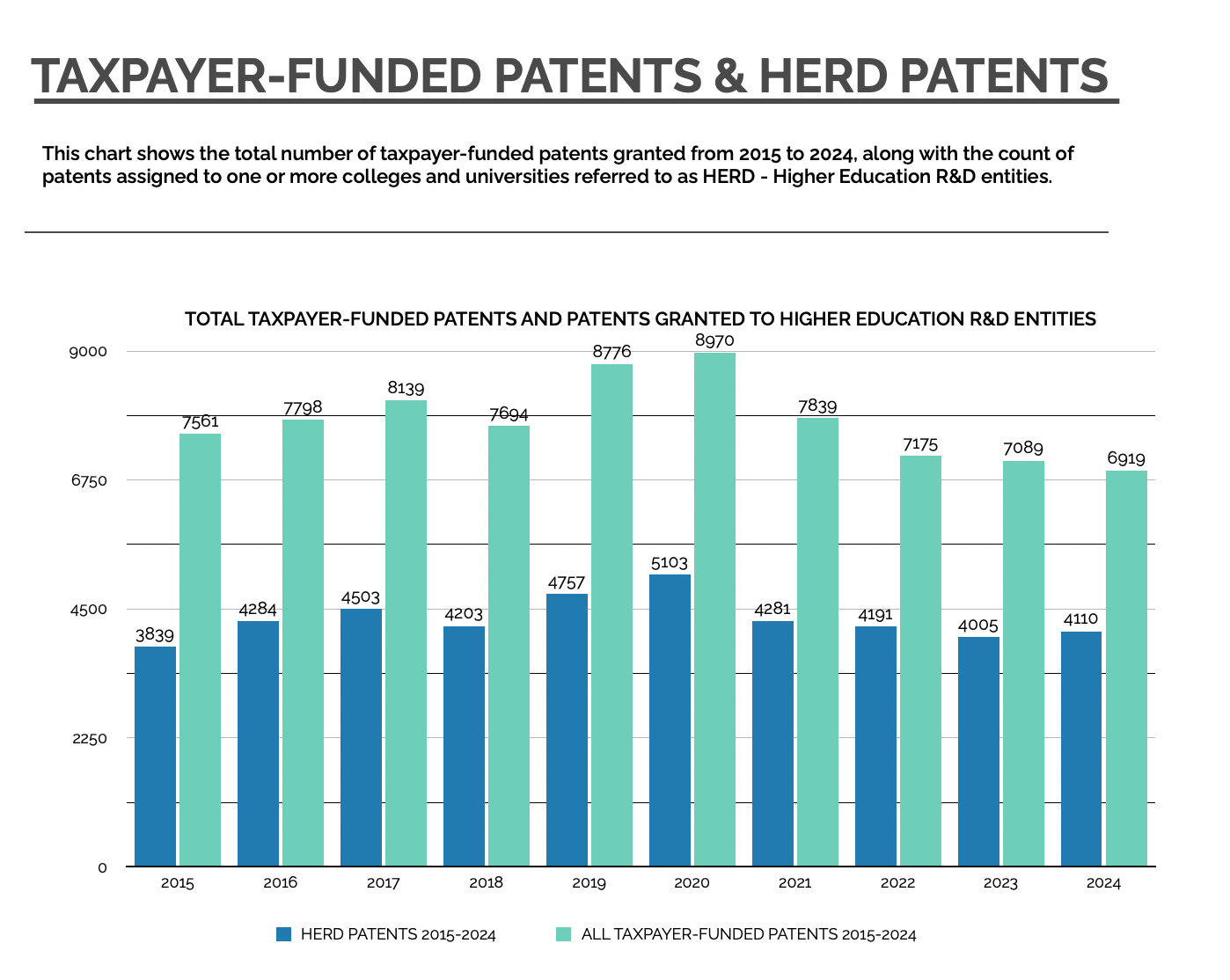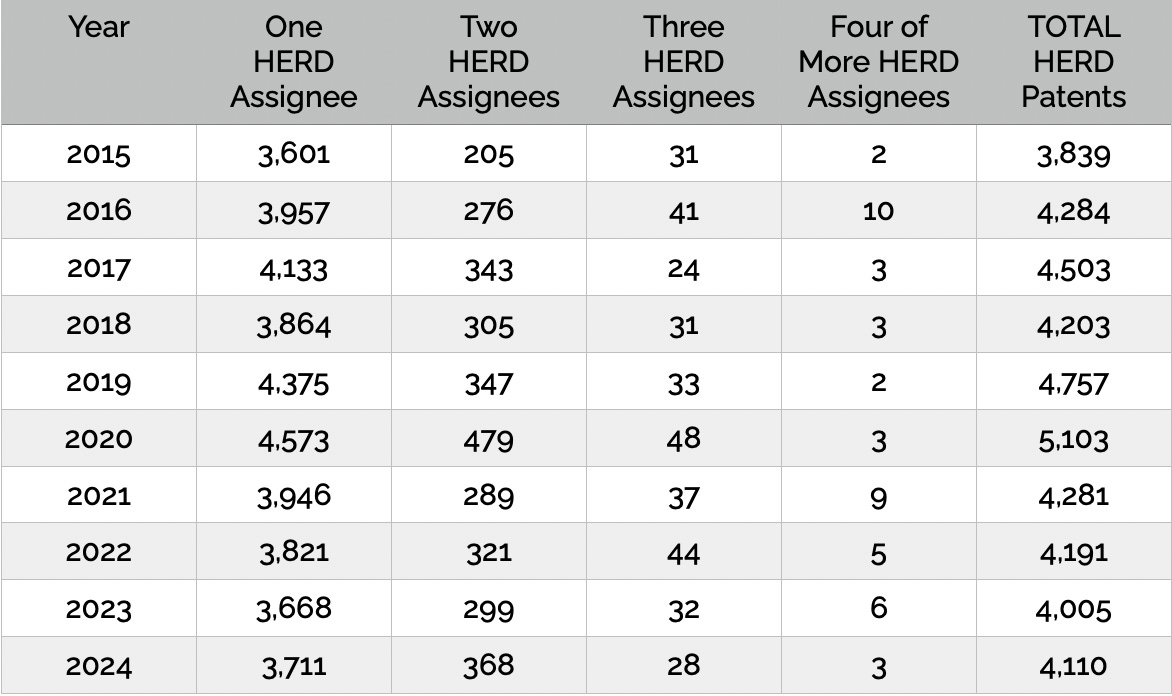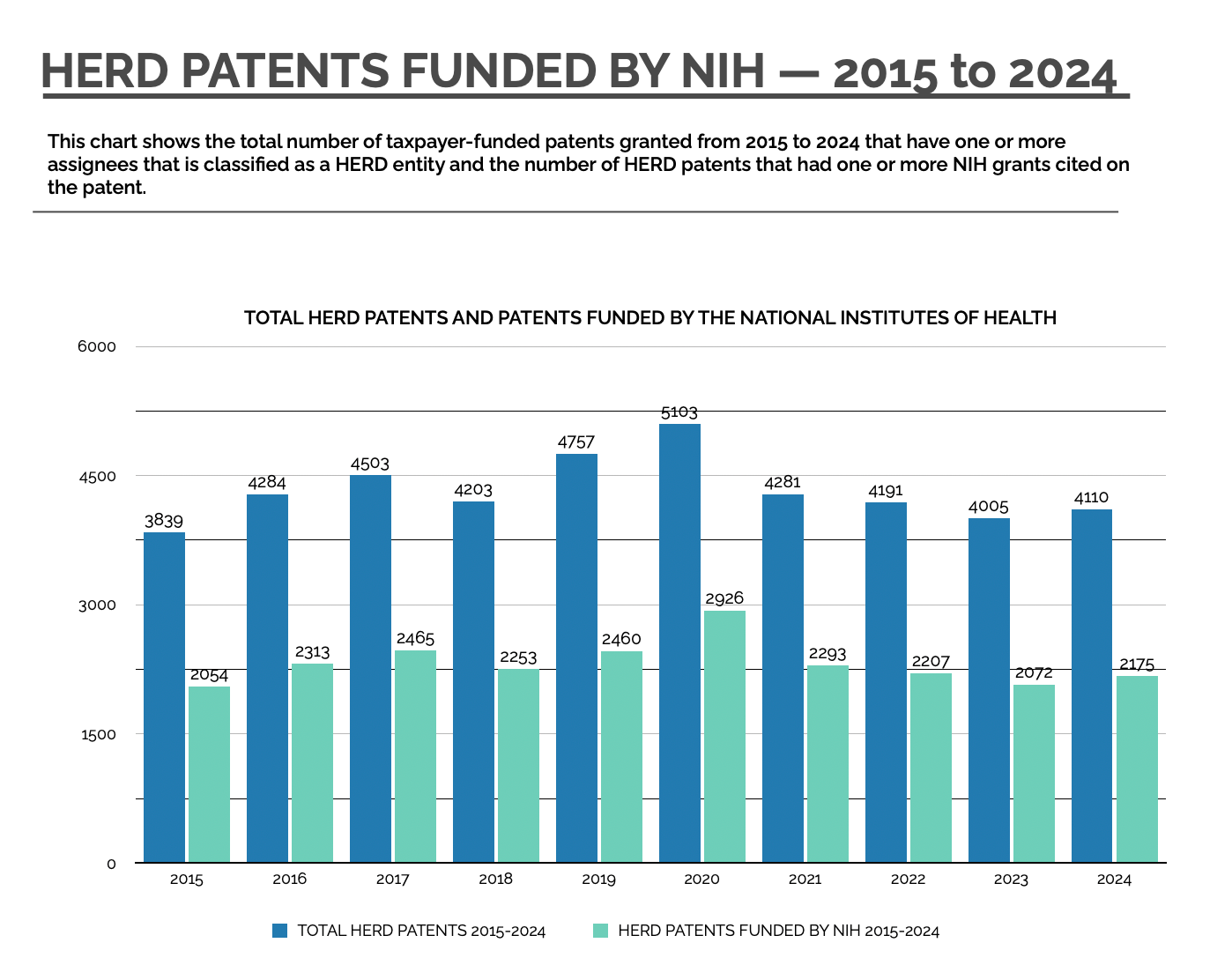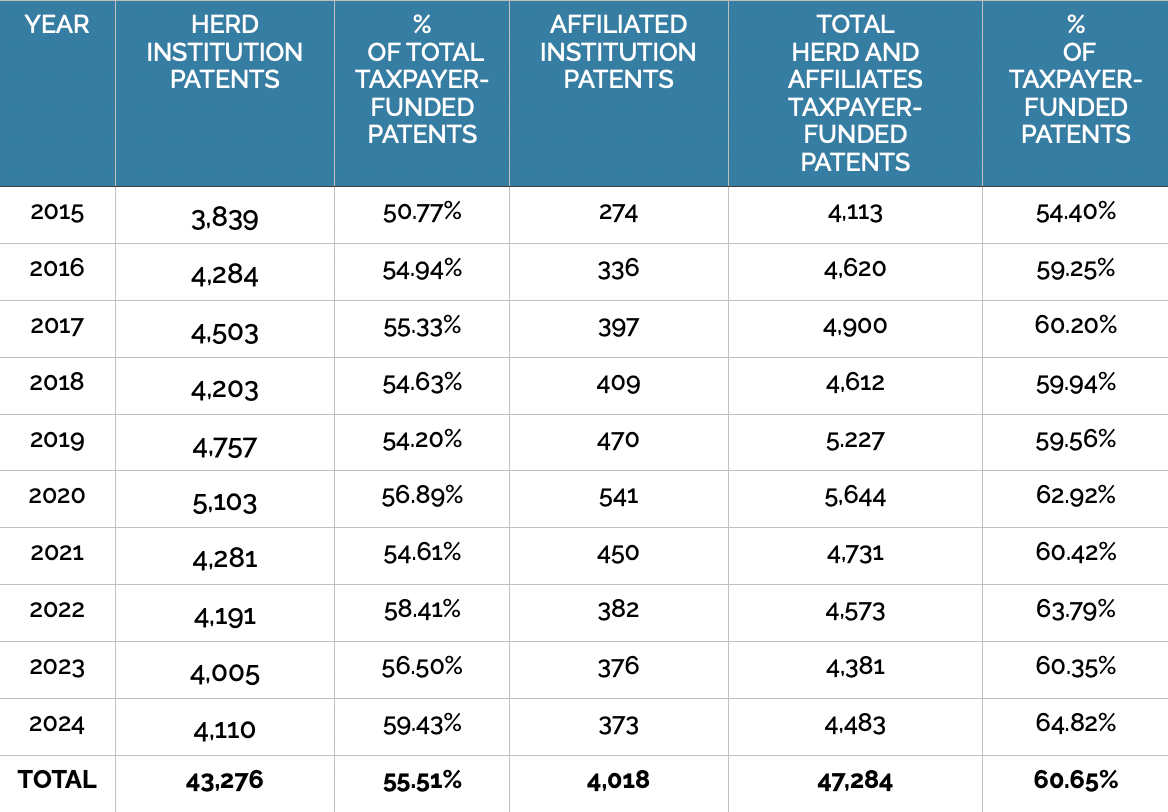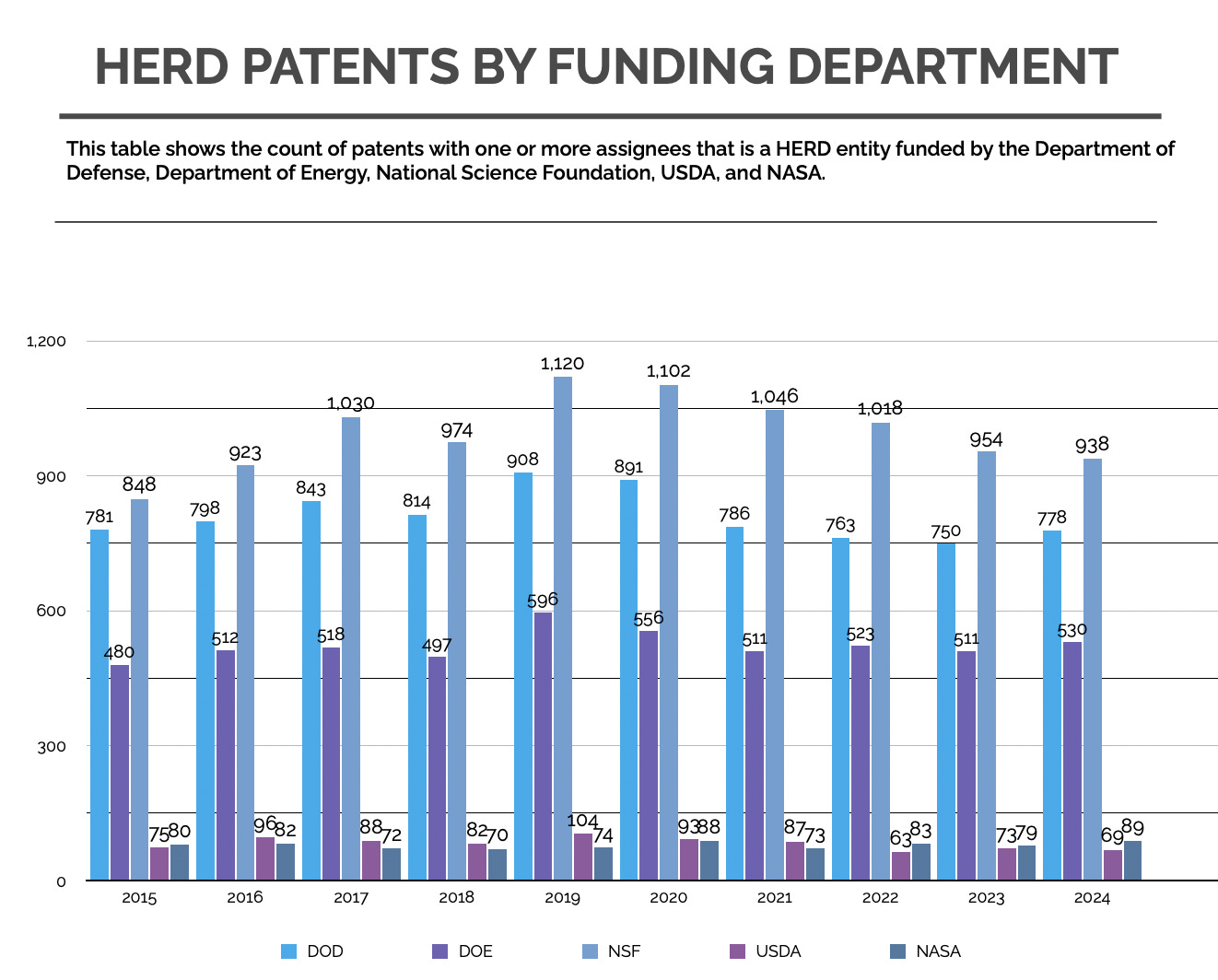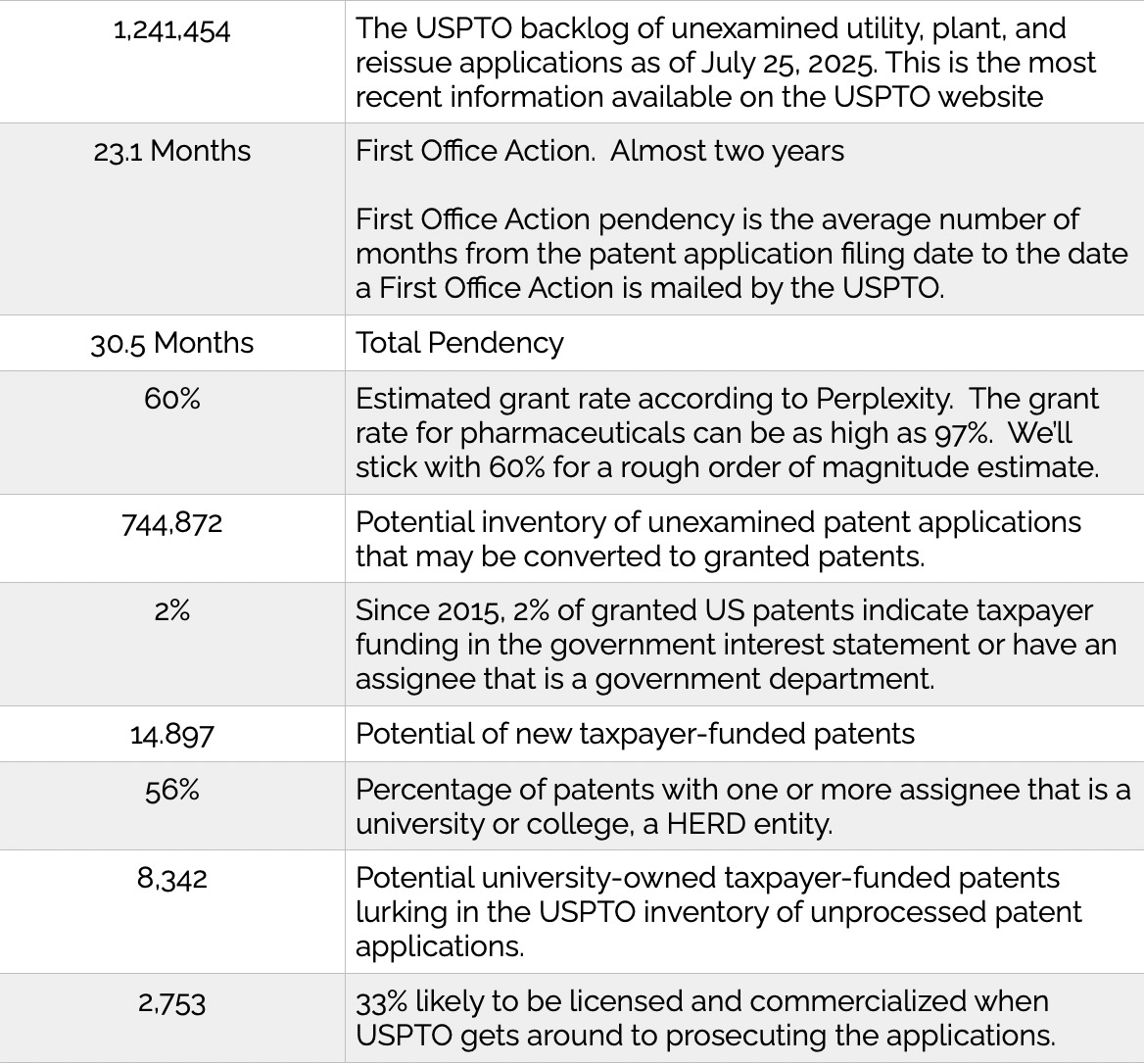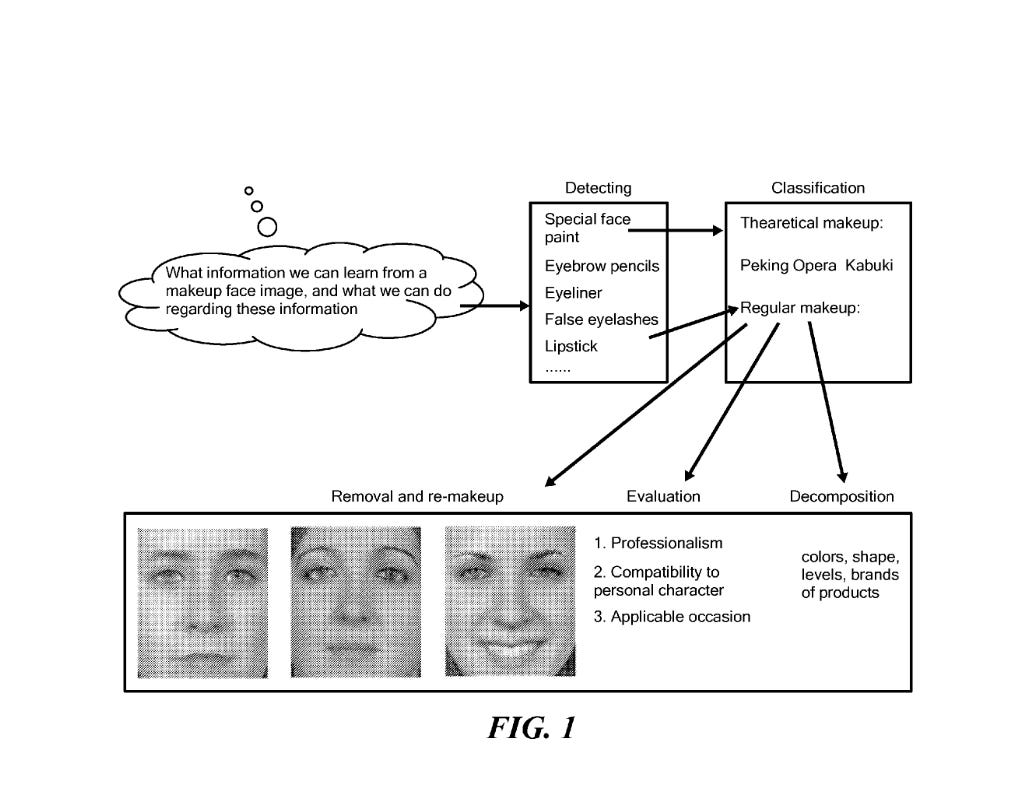A PIECE OF THE ACTION
University-Owned Taxpayer-Funded Patents
The Secretary of Commerce, Howard Lutnick, put forth a proposal to modify the ownership rights of university-owned taxpayer-funded patents. In light of his proposal, we thought it would be a good time to take a look at what is in the FedInvent portfolio of Higher Education R&D (HERD) patents — patents assigned to universities, colleges, and other higher education institutions. But first, Mr. Lutnick’s proposal.
A Piece of the Action
On August 26th, Commerce Secretary Howard Lutnick appeared on CNBC’s Squawk Box for an interview about the federal government’s new ownership of 10% of Intel Corporation and the national security issues surrounding semiconductors and America’s need for more domestic chip manufacturing capacity. During the interview, the Secretary was asked why the federal government should own part of a publicly traded US company. His response was, Intel received billions of dollars in grant money under the CHIPS Act. Shouldn’t US taxpayers benefit from the taxpayers’ investment in Intel? The US taxpayers should get a piece of the action.
The CNBC host then asked the Secretary what the bar is for the federal government to seek ownership in US companies. Mr. Lutnick responded that the federal government should assess where the US government is adding fundamental value to a business. He provided an example: Lockheed Martin "makes exquisite missiles" for the Department of Defense. He added that the firm receives 98% of its revenue from federal contracts. Secretary Lutnick suggested that US taxpayers should have equity in Lockheed (NYSE: LMT). Mr. Lutnick would like a piece of the action in the revenue of government contractors, companies whose primary business is supporting the US government. Exquisite missiles and the F-35 Lightning II Joint Strike fighter delivered by LMT apparently aren’t enough.
Next came a word you rarely hear on Squawk Box — patents.
The Secretary said, "The federal government spends hundreds of billions of dollars to fund grants to universities. They keep the patents. Don’t you think America should get a stake in those patents when the government financed the research?" The Secretary would like a piece of the action when universities commercialize the inventions that resulted from taxpayer-funded R&D.
Mr. Lutnick made no mention of that pesky Bayh-Dole Act (Pub. L. 96-517, December 12, 1980) and its provisions that enable federal contractors to retain ownership of patents that resulted from work done under a federal contract or grant, or how he would go about amending the law to change the ownership rights to add a "Piece of the Action" clause. There is no legislation on the table at the moment, but issues like this can take on a life of their own. So the FedInvent team got to work.
University-Owned Taxpayer-Funded Patents
FedInvent analyzed taxpayer-funded patents granted from 2015 to 2024. Here is what we found.
From 2015-2024, 77,957 US patents citing taxpayer funding were issued by the USPTO, an office that is part of the Commerce Department run by Secretary Lutnick.
Of these patents, 43,276 (56%) have one or more assignees classified as a higher education R&D (HERD) institution.
Another Dimension - Collaboration
There isn’t a one-to-one relationship between a federal grant and a university.
University inventors do a lot of collaborating, especially in the age of the internet, Zoom, and bioreactors that can be controlled from anywhere in the world by any collaborator with a password and a smartphone.
While 92% of the HERD patents assigned to a university or college have a single HERD assignee, 3,627 patents have two or more HERD assignees that share ownership of the inventions.
Foreign Universities
From 2015 to 2024, 720 patents have a foreign academic institution as an assignee. Some of these patents have multiple HERD assignees, including one or more US universities and, in some cases, more than one foreign university as an assignee.
There are patents where the US government co-owns a patent with a foreign university. US patents are also owned by foreign universities and, in some cases, an agency of the foreign government. For example, the National Cancer Institute (NCI) awarded grant number R01 CA105304 to Dr. Marianne Sadar, PhD, a principal investigator at the British Columbia Cancer Agency. Dr. Sadar is an internationally recognized inventor and was the first Canadian to serve as Chair of the US Army’s Department of Defense’s Programmatic Panel for Prostate Cancer Research. This NCI grant resulted in at least 13 patents. Several of these patents share ownership with the University of British Columbia.
Who Funds University-Owned Patents
The most prolific funder of university R&D is the National Institutes of Health. HERD entities cited an NIH Institute as the source of funding on 23,218 patents, 54% of the HERD patents we analyzed.
HERD-Affiliated Entities
One of the force multipliers for colleges and universities to accelerate their discoveries is collaboration between university researchers and researchers working with a HERD-affiliated entity. University-affiliated institutions include academic medical centers, post-doctoral research facilities, NSF-designated HERD institutes such as Scripps Research Institution and Cold Spring Harbor Laboratory, and other organizations. Universities and their affiliated institutions frequently have fluid relationships where professors and researchers work together on important research.
The table shows patents received by HERD-affiliated entities and the reach of HERD entities and their affiliates receiving taxpayer-funded patents.
The Other Major Funders
HERD patents cite 24,919 grants or contracts that were the source of funding from the Department of Defense (8,112), Department of Energy (5,234), National Science Foundation (9,953), USDA (830), and NASA (790). The table chart below shows these citations year over year.
HERD Collaborations
There is a wide variety of collaborations between universities and other entities.
From 2015 to 2024:
2,075 patents cite both a university entity and a US-based company.
129 patents cite a US university and a foreign company.
1,423 patents cite co-ownership between a US government entity and a university..
2,528 patents cite a Federally Funded Research and Development Center (FFRDC) and one or more university entities as co-owners of the patent.
Like the federal government, colleges and universities don’t manufacture anything. Many of the collaborations between universities and companies, domestic and foreign, are with firms that can turn the patented invention into a product — pharmaceutical companies, medical equipment manufacturers, and others.
The 33% Solution
There is another number to consider. Both academic innovation researchers and business reporters use 33% as a rough order of magnitude for the number of US patents that are commercialized.
Using the 33% rule, of the 43,276 HERD patents granted from 2015 to 2024, 14,281 may have been or eventually will be commercialized or licensed. That’s a pretty respectable number. Unfortunately, there is no reporting mechanism that informs the US taxpayer about the number of patents they funded that are generating royalties or being used in new products and services. There are indicia of licensing, such as the conversion of the patent maintenance fees from the discounted rate afforded to universities to non-discounted maintenance fees. There are also Federal Register notices informing the public of the request to grant an exclusive license to a patent owned by the government. There is no publicly available list of licensed taxpayer-funded patents.
Accelerate Commercialization Of University-Owned IP
Instead of spending time figuring out how to inject the federal government into the revenue stream that comes from commercializing taxpayer-funded inventions, the USPTO and the Department of Commerce should spend their resources accelerating the patent prosecution pace by hiring more examiners and providing them with better technology to do their job. Getting the patents faster will help accelerate commercialization by giving universities and their partners a solid confirmation that their inventions are protected by patents. Even the Sharks on Shark Tank ask entrepreneurs if they have a patent.
Back-of-the-Envelope Math
To make our point, here is a little back-of-the-envelope math on the potential HERD patent application backlog.
University-owned taxpayer-funded patents make a major contribution to American competitiveness and to protecting national security. Changing the ownership conveyed by the Bayh-Dole Act, that’s been working fine since 1980, is probably a bad idea, unless you are a patent attorney, in which case the billable hours will flow.
Please send us your questions!!
We’d like to know what you’d like to know. Please send your questions to info@wayfinder.digital
Would you like to know how many patents we’ve found for the Department of Energy High Performance Computing Program? 113 so far.
How many DOD Trifectas are there? DOD Trifectas are patents that cite funding from all three DOD research offices: the Air Force Office of Scientific Research (AFOSR), the Army Research Office (ARO), and the Office of Naval Research (ONR).
The most unusual DOD Trifecta was US Patent 10339685, a variation on facial recognition technology. The patent went to Northeastern University.
SYSTEM FOR BEAUTY, COSMETIC, AND FASHION ANALYSIS — A system and method are provided to detect, analyze, and digitally remove makeup from an image of a face. An autoencoder-based framework is provided to extract attractiveness-aware features to perform an assessment of facial beauty. (A potential way for DOD to find future Mata Haris in the age of social media?)
Let us know what you’d like to know, and we’ll add it to future FedInvent newsletters.
Before We Go
From 2005 through 2025, Lockheed Martin has received 221 taxpayer-funded patents. This includes patents citing Phase II SBIR contracts where the grant went to a small business, and the patents went to Lockheed Martin.
Thank you for reading FedInvent.
The FedInvent Team
Wayfinder Digital's FedInvent Project tracks the federal innovation ecosphere. FedInvent’s patent repository now has over 137,000 taxpayer-funded patents granted since 2005. Our data comes from patents and patent applications published by the US Patent and Trademark Office.
Please reach out if you have questions or suggestions. You can reach us at info@wayfi nder.digital


